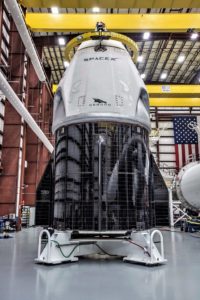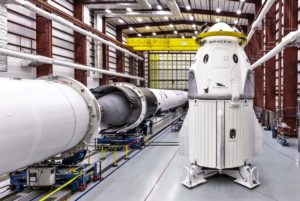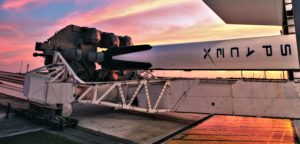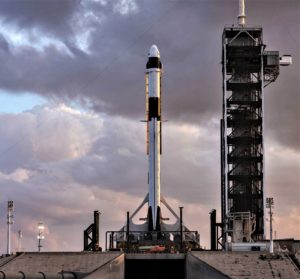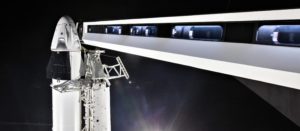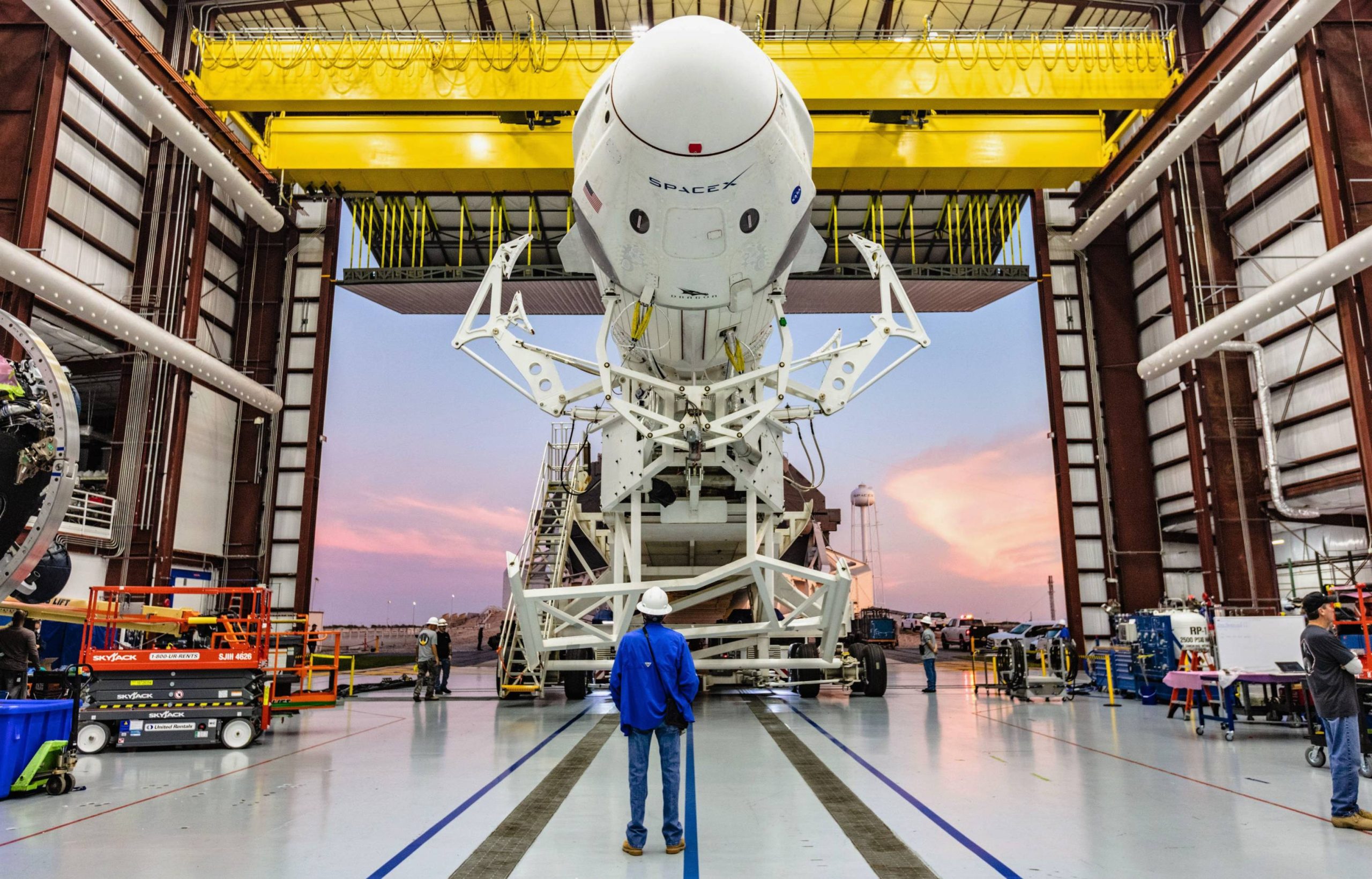
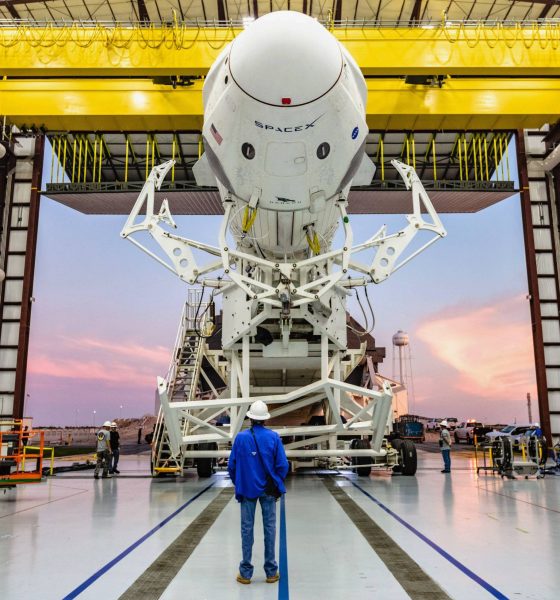
SpaceX
SpaceX to static fire Falcon 9 with a spacecraft on board for the first time in two years
SpaceX has rolled Falcon 9 and Crew Dragon out to Pad 39A for the second time ever in preparation for a full wet dress rehearsal (WDR) and static fire – no earlier than Jan. 23 – of booster B1051’s nine Merlin 1D engines, preparing for an orbital launch attempt that slipped from NET Feb. 9 to Feb. 16 earlier this week.
While this milestone is important for myriad other reasons, it happens to be exceptionally unique thanks to one particularly surprising feature: Falcon 9 rolled out for its static fire with Crew Dragon (the rocket’s payload) still attached. This will be the first time in more than 28 months – since Amos-6, the last catastrophic Falcon 9 failure – that SpaceX has performed its routine on-pad static fire with a valuable payload attached to the rocket.
The Falcon 9 and Crew Dragon are now in position at launch pad 39A in readiness for a crucial test firing of its nine first-stage engines as soon as tomorrow: https://t.co/kYCr6Nzd0I pic.twitter.com/9VDXJL7ZLX
— Spaceflight Now (@SpaceflightNow) January 22, 2019
On September 1st, 2016, a SpaceX Falcon 9 experienced the rocket family’s second catastrophic failure ever when supercool liquid oxygen froze around a COPV’s carbon fiber wrappings, expanding just enough to breach the ultra-high-pressure vessel. Falcon 9 and its ~$200M Amos-6 satellite payload were completely destroyed, while Launch Complex 40 (LC-40) suffered tens of millions of dollars of damage that would effectively require it to be completely rebuilt over the course of more than a year.
After Amos-6, SpaceX immediately halted the practice of including customer payloads on Falcon 9 during static fires, used to save 24-48 hours of time between static fire and launch. SpaceX nevertheless retained the option if customers were to explicitly request it, otherwise wisely concluding (likely with more than a little encouragement from insurance companies) that expediting schedules by a few dozen hours was not worth the entirely unnecessary risk to satellite payloads that often cost hundreds of millions of dollars and take years to build.
https://twitter.com/spiel2001/status/1087828282937102338
Given that SpaceX has stuck to that practice for all 38 Falcon 9 launches it has performed between Amos-6 and the present day, it seems all but guaranteed that the first orbit-ready Crew Dragon’s presence on Falcon 9 during its static fire has been done only at the specific request of the launch customer – in this case, NASA. It’s probably not hyperbolic to argue that Demo-1’s (DM-1) Crew Dragon is the most valuable, important, expensive, and irreplaceable spacecraft SpaceX has ever attempted to launch, having likely spent millions of work hours building, changing, refining, and testing it to meet NASA’s exacting and sometimes absurd requirements.
If Falcon 9 B1051 were to fail with Crew Dragon atop it during its Pad 39A static fire, it might be possible for the DM-2’s Crew Dragon to be completed and modified for an uncrewed test flight with just six months of delay, assuming Falcon 9’s mode of failure could be investigated and repaired to NASA’s satisfaction. However, the destruction of the DM-1 capsule and trunk could almost indefinitely delay SpaceX’s first crewed launch, dependent upon an inflight-abort test that is supposed to use the refurbished DM-1 capsule, while the Crew Dragon currently supposed to launch after DM-2 is unlikely to be ready before August or September 2019.
- The first complete Crew Dragon is likely just days away from rolling out to Pad 39A atop Falcon 9. (SpaceX)
- An impressive view of Crew Dragon (DM-1), Falcon 9 B1051, and its upper stage. (SpaceX)
- DM-1 and Falcon 9 were greeted by an extraordinary – albeit mildly bittersweet – dawn during their first-ever trip out to Pad 39A. (SpaceX)
- Falcon 9 and Crew Dragon vertical at Pad 39A. (SpaceX)
- Crew Dragon and its crew-rated Falcon 9 went vertical at a launch pad (Pad 39A) for the first time ever on January 4th. (SpaceX)
Ultimately, NASA likely requested that Crew Dragon remain atop Falcon 9 for this static fire out of some desire for a full-fidelity test environment and complement of data. There is perhaps a very limited chance that Crew Dragon will be fully fueled with hydrazine (MMH/NTO) and have its launch escape system (LES) active and ready to go in the event of a rocket failure.
Why they deemed the immense potential risk to be worthwhile is far less clear. Whether it is being done out of complacency or a desire for expediency or ultra-realistic test data, the risk is the same. In theory, Falcon 9 has been tested extensively and should operate perfectly, just as expected. So was Amos-6’s Falcon 9.

News
SpaceX reportedly mulling IPO, eyeing largest of all time: report
“I do want to try to figure out some way for Tesla shareholders to participate in SpaceX. I’ve been giving a lot of thought to how to give people access to SpaceX stock,” Musk said.

SpaceX is reportedly mulling an initial public offering, eyeing what would be the largest valuation at the time of availability of all time, a new report from Bloomberg said on Tuesday.
It is one of many reports involving one of Elon Musk’s companies and a massive market move, as this is not the first time we have seen reports of an IPO by SpaceX. Musk himself has also dispelled other reports in the past of a similar nature, including an xAI funding round.
SpaceX and Musk have yet to comment on the report. In the past, untrue reports were promptly replied to by the CEO; this has not yet gained any response, which is a good sign in terms of credibility.
However, he said just a few days ago that stories of this nature are inaccurate:
“There has been a lot of press claiming SpaceX is raising money at $800B, which is not accurate. SpaceX has been cash flow positive for many years and does periodic stock buybacks twice a year to provide liquidity for employees and investors. Valuation increments are a function of progress with Starship and Starlink and securing global direct-to-cell spectrum that greatly increases our addressable market. And one other thing that is arguably most significant by far.”
There has been a lot of press claiming @SpaceX is raising money at $800B, which is not accurate.
SpaceX has been cash flow positive for many years and does periodic stock buybacks twice a year to provide liquidity for employees and investors.
Valuation increments are a…
— Elon Musk (@elonmusk) December 6, 2025
Musk has discussed a potential IPO for SpaceX in recent months, as the November 6 shareholder meeting, as he commented on the “downsides” of having a public company, like litigation exposure, quarterly reporting pressures, and other inconveniences.
Nevertheless, Musk has also said he wants there to be a way for Tesla shareholders to get in on the action. At the meeting in early November, he said:
“I do want to try to figure out some way for Tesla shareholders to participate in SpaceX. I’ve been giving a lot of thought to how to give people access to SpaceX stock.”
Additionally, he added:
“Maybe at some point., SpaceX should become a public company despite all the downsides of being public.”
Musk has been historically reluctant to take SpaceX public, at times stating it could become a barrier to colonizing Mars. That does not mean it will not happen.
Bloomberg’s report cites multiple unidentified sources who are familiar with the matter. They indicate to the publication that SpaceX wants to go public in mid-to-late 2026, and it wants to raise $30 billion at a valuation of around $1.5 trillion.
This is not the first time SpaceX has discussed an IPO; we reported on it nine years ago. We hope it is true, as the community has spoken for a long time about having access to SpaceX stock. Legendary investor Ron Baron is one of the lucky few to be a SpaceX investor, and said it, along with Tesla, is a “lifetime investment.”
Tesla bull Ron Baron reveals $100M SpaceX investment, sees 3-5x return on TSLA
The primary driver of SpaceX’s value is Starlink, the company’s satellite internet service. Starlink contributes 60-70 percent of SpaceX’s revenue, meaning it is the primary value engine. Launch services, like Falcon 9 contracts, and the development of Starship, also play supporting roles.
News
SpaceX reaches incredible milestone with Starlink program

SpaceX reached an incredible milestone with its Starlink program with a launch last night, as the 3,000th satellite of the year was launched into low Earth orbit.
On Monday, SpaceX also achieved its 32nd flight with a single Falcon 9 rocket from NASA’s Kennedy Space Center.
The mission was Starlink 6-92, and it utilized the Falcon 9 B1067 for the 32nd time this year, the most-used Falcon booster. The flight delivered SpaceX’s 3000th Starlink satellite of the year, a massive achievement.
There were 29 Starlink satellites launched and deployed into LEO during this particular mission:
Falcon 9 launches 29 @Starlink satellites from Florida pic.twitter.com/utKrXjHzPN
— SpaceX (@SpaceX) December 9, 2025
SpaceX has a current goal of certifying its Falcon boosters for 40 missions apiece, according to Spaceflight Now.
The flight was the 350th orbital launch from the nearby SLC-40, and the 3,000 satellites that have been successfully launched this year continue to contribute to the company’s goal of having 12,000 satellites contributing to global internet coverage.
There are over five million users of Starlink, the latest data shows.
Following the launch and stage separation, the Falcon 9 booster completed its mission with a perfect landing on the ‘Just Read the Instructions’ droneship.
The mission was the 575th overall Falcon 9 launch, highlighting SpaceX’s operational tempo, which continues to be accelerated. The company averages two missions per week, and underscores CEO Elon Musk’s vision of a multi-planetary future, where reliable connectivity is crucial for remote work, education, and emergency response.
As Starlink expands and works toward that elusive and crucial 12,000 satellite goal, missions like 6-92 pave the way for innovations in telecommunications and enable more internet access to people across the globe.
With regulatory approvals in over 100 countries and millions of current subscribers, SpaceX continues to democratize space, proving that reusability is not just feasible, but it’s also revolutionary.
Elon Musk
Elon Musk gives nod to SpaceX’s massive, previously impossible feat
It was the booster’s 30th flight, a scenario that seemed impossible before SpaceX became a dominant force in spaceflight.
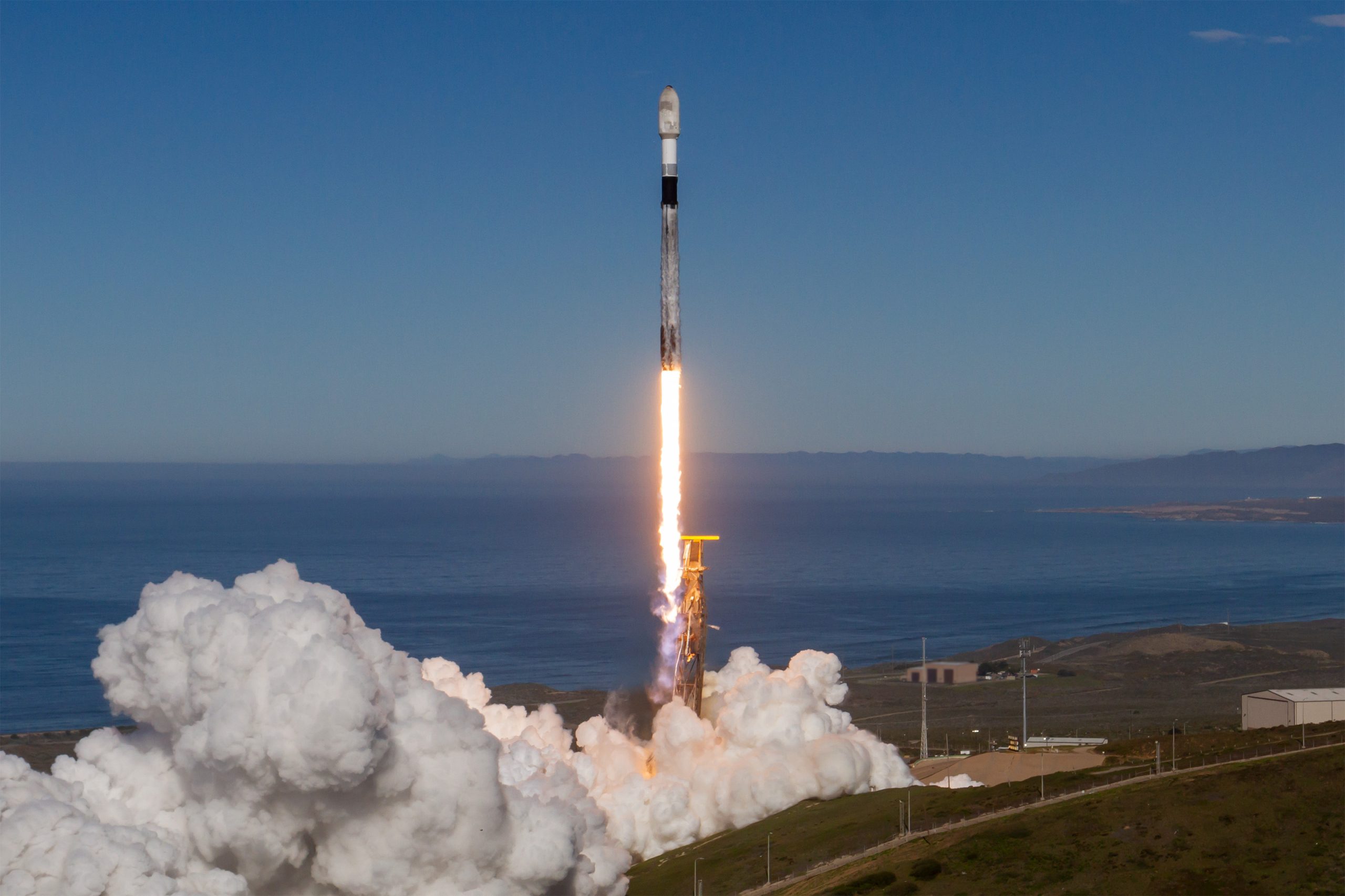
Elon Musk gave a nod to one of SpaceX’s most underrated feats today. Following the successful launch of the Transporter-15 mission, SpaceX seamlessly landed another Falcon 9 booster on a droneship in the middle of the ocean.
It was the booster’s 30th flight, a scenario that seemed impossible before SpaceX became a dominant force in spaceflight.
Elon Musk celebrates a veteran Falcon 9 booster’s feat
SpaceX completed another major milestone for its Smallsat Rideshare program on Friday, successfully launching and deploying 140 spacecraft aboard a Falcon 9 from Vandenberg Space Force Base. The mission, known as Transporter-15, lifted off two days later than planned after a scrub attributed to a ground systems issue, according to SpaceFlight Now. SpaceX confirmed that all payloads designed to separate from the rocket were deployed as planned.
The Falcon 9 used for this flight was booster B1071, one of SpaceX’s most heavily flown rockets. With its 30th mission completed, it becomes the second booster in SpaceX’s fleet to reach that milestone. B1071’s manifest includes five National Reconnaissance Office missions, NASA’s SWOT satellite, and several previous rideshare deployments, among others. Elon Musk celebrated the milestone on X, writing “30 flights of the same rocket!” in his post.
Skeptics once dismissed reusability as unfeasible
While rocket landings are routine for SpaceX today, that was not always the case. Industry veterans previously questioned whether reusable rockets could ever achieve meaningful cost savings or operational reliability, often citing the Space Shuttle’s partial reusability as evidence of failure.
In 2016, Orbital ATK’s Ben Goldberg argued during a panel that even if rockets could be reusable, they do not make a lot of sense. He took issue with Elon Musk’s claims at the time, Ars Technica reported, particularly when the SpaceX founder stated that fuel costs account for just a fraction of launch costs.
Goldberg noted that at most, studies showed only a 30% cost reduction for low-Earth orbit missions by using a reusable rocket. “You’re not going to get 100-fold. These numbers aren’t going to change by an order of magnitude. They’re just not. That’s the state of where we are today,” he said.
Former NASA official Dan Dumbacher, who oversaw the Space Launch System, expressed similar doubts in 2014, implying that if NASA couldn’t make full reusability viable, private firms like SpaceX faced steep odds.
